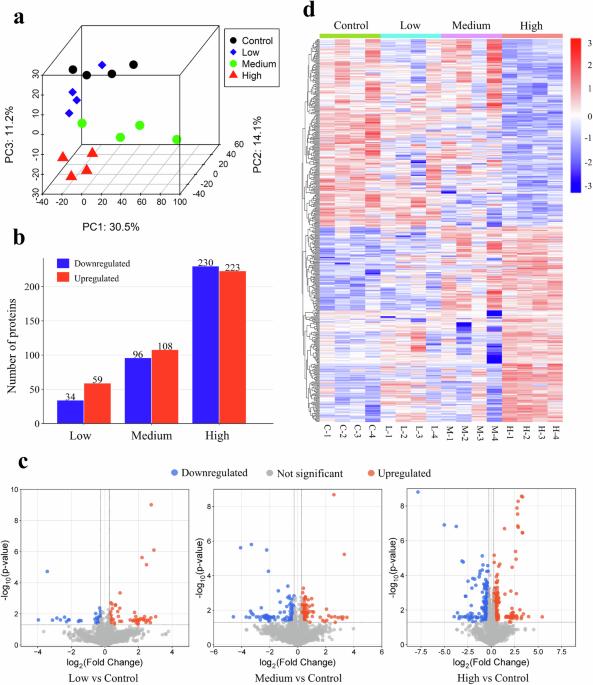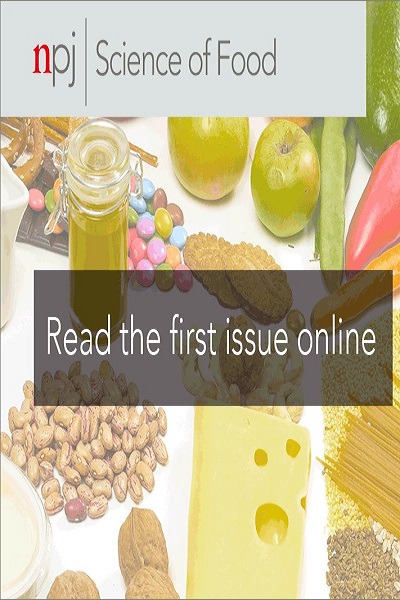对甲基乙二醛诱导人神经母细胞瘤细胞系神经毒性的蛋白质组学和代谢组学综合分析
IF 6.3
1区 农林科学
Q1 FOOD SCIENCE & TECHNOLOGY
引用次数: 0
摘要
本研究旨在强调甲基乙二酸(MGO)暴露在 SH-SY5Y 人神经母细胞瘤细胞中引起的分子和生化变化,并利用蛋白质组学和代谢组学的综合方法探讨这些变化如何导致其神经毒性。利用无标记定量纳米LC-MS/MS蛋白质组学和基于靶向LC-TQ-MS/MS的代谢组学,结果发现MGO暴露,尤其是细胞毒性水平的暴露,显著改变了SH-SY5Y细胞的蛋白质组和代谢组。蛋白质组学数据分析显示,细胞功能发生了重大改变,包括蛋白质合成、细胞结构完整性、线粒体功能和氧化应激反应。代谢组学分析以及代谢组学和蛋白质组学数据的整合突显了关键代谢途径的显著变化,包括精氨酸生物合成、谷胱甘肽代谢、半胱氨酸和蛋氨酸代谢以及三羧酸循环。这些结果表明,暴露于 MGO 会诱导细胞产生毒性效应和适应性反应。暴露于 MGO 会导致内质网应激增加、细胞粘附和细胞外基质完整性破坏、线粒体功能障碍和氨基酸代谢紊乱,从而导致细胞毒性。相反,细胞则通过上调蛋白质合成、激活 Nrf2 通路和重编程新陈代谢来对抗二碳酸应激和维持能量水平,从而表现出适应性反应。此外,一组与这些变化相关的关键蛋白质和代谢物的表达水平随着 MGO 浓度的增加而出现显著的浓度依赖性下降或增加,这表明它们有可能成为 MGO 暴露的生物标记物。综上所述,这些研究结果让人们深入了解了 MGO 诱导神经毒性的分子机制以及治疗干预的潜在靶点。本文章由计算机程序翻译,如有差异,请以英文原文为准。

An integrated proteomics and metabolomics analysis of methylglyoxal-induced neurotoxicity in a human neuroblastoma cell line
This study aimed to highlight the molecular and biochemical changes induced by methylglyoxal (MGO) exposure in SH-SY5Y human neuroblastoma cells, and to explore how these changes contribute to its neurotoxicity, utilizing an integrated proteomics and metabolomics approach. Using label-free quantitative nanoLC-MS/MS proteomics and targeted LC-TQ-MS/MS-based metabolomics, the results revealed that MGO exposure, particularly at cytotoxic levels, significantly altered the proteome and metabolome of SH-SY5Y cells. Analysis of proteomics data showed significant alterations in cellular functions including protein synthesis, cellular structural integrity, mitochondrial function, and oxidative stress responses. Analysis of metabolomics and integration of metabolomics and proteomics data highlighted significant changes in key metabolic pathways including arginine biosynthesis, glutathione metabolism, cysteine and methionine metabolism, and the tricarboxylic acid cycle. These results suggest that MGO exposure induced both toxic effects and adaptive responses in cells. MGO exposure led to increased endoplasmic reticulum stress, disruptions in cellular adhesion and extracellular matrix integrity, mitochondrial dysfunction, and amino acid metabolism disruption, contributing to cellular toxicity. Conversely, cells exhibited adaptive responses by upregulating protein synthesis, activating the Nrf2 pathway, and reprogramming metabolism to counteract dicarbonyl stress and maintain energy levels. Furthermore, a set of key proteins and metabolites associated with these changes were shown to exhibit a significant concentration-dependent decrease or increase in their expression levels with increasing MGO concentrations, suggesting their potential as biomarkers for MGO exposure. Taken together, these findings provide insight into the molecular mechanisms underlying MGO-induced neurotoxicity and potential targets for therapeutic intervention.
求助全文
通过发布文献求助,成功后即可免费获取论文全文。
去求助
来源期刊

NPJ Science of Food
FOOD SCIENCE & TECHNOLOGY-
CiteScore
7.50
自引率
1.60%
发文量
53
期刊介绍:
npj Science of Food is an online-only and open access journal publishes high-quality, high-impact papers related to food safety, security, integrated production, processing and packaging, the changes and interactions of food components, and the influence on health and wellness properties of food. The journal will support fundamental studies that advance the science of food beyond the classic focus on processing, thereby addressing basic inquiries around food from the public and industry. It will also support research that might result in innovation of technologies and products that are public-friendly while promoting the United Nations sustainable development goals.
 求助内容:
求助内容: 应助结果提醒方式:
应助结果提醒方式:


